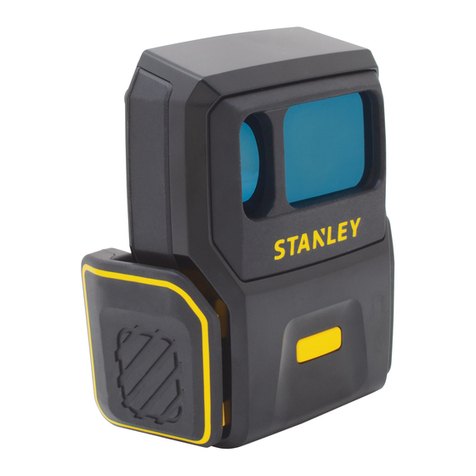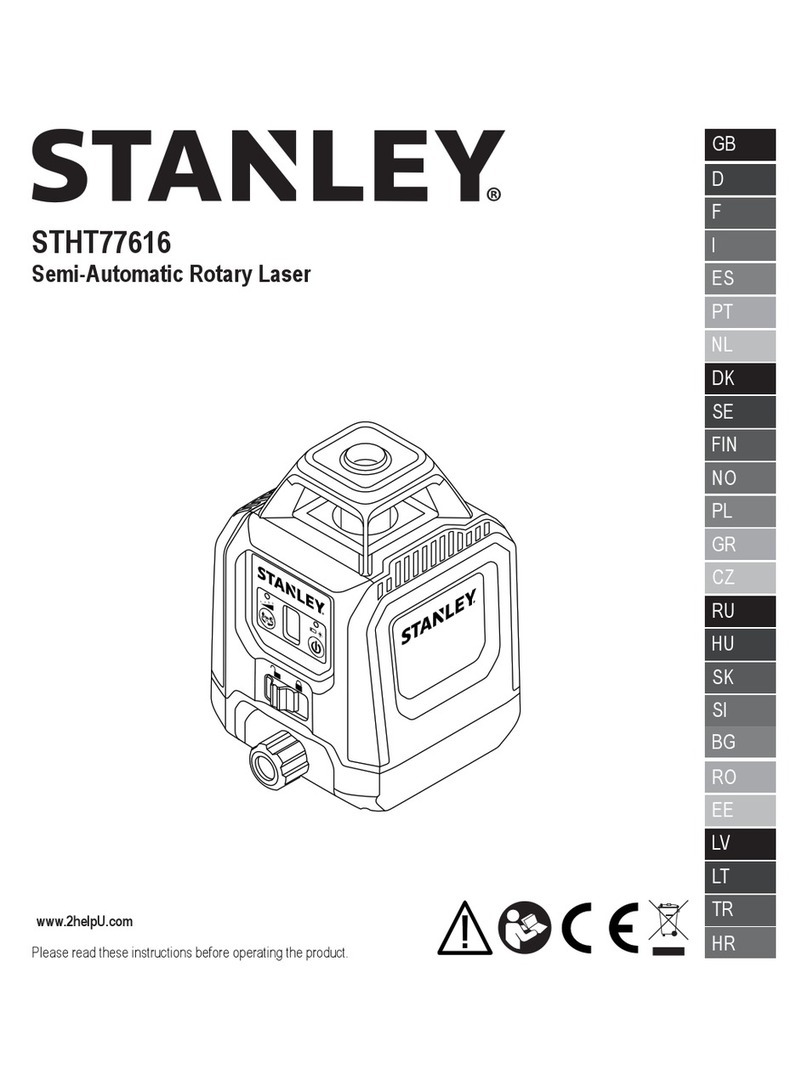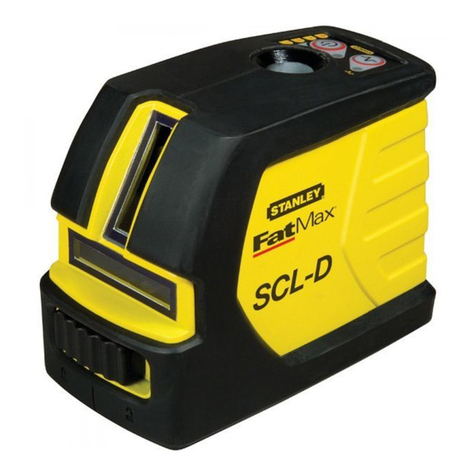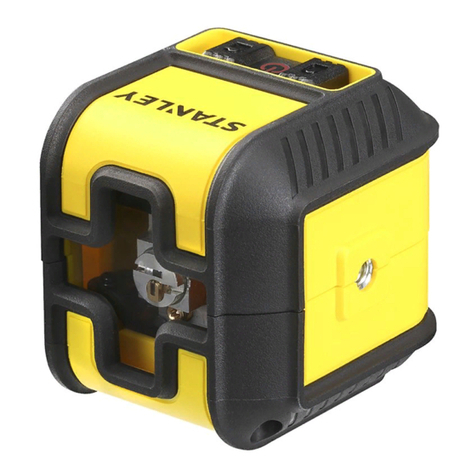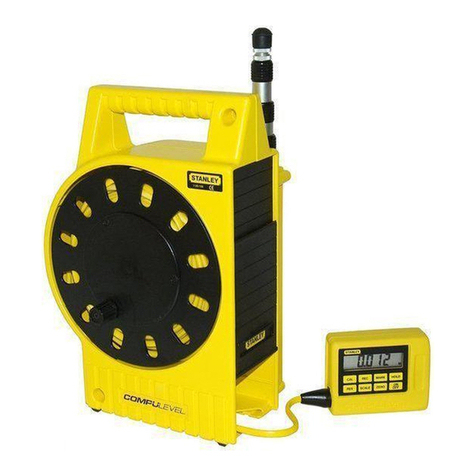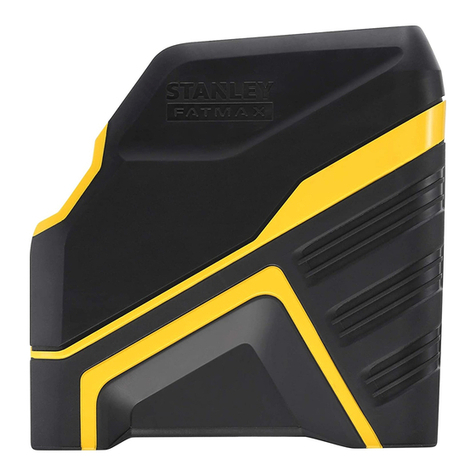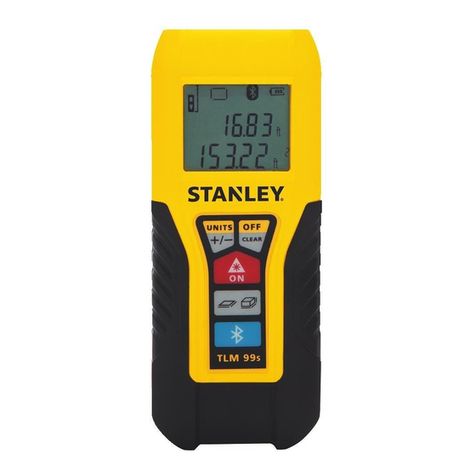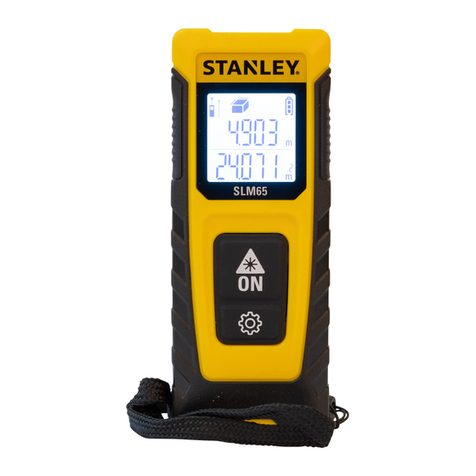
8
GB 6. Push the Micro USB port cover back over the laser’s charging
port.
Whenever the laser is not in use, slide the Power/Transport
Lock switch to the LEFT to the Locked/OFF position (Figure A
6) to save battery power.
Using the Mounting Block
On the bottom of the laser is a moveable block (Figure D).
• To use the magnets on the front of the laser (Figure A8
) to mount the laser against the side of a steel beam,
do not extend the moveable block (Figure D1). This
will allow the down dot to be aligned with the edge of the
steel beam.
• To mount the laser over a point on the oor (using a multi-
function bracket or a tripod), pull out the moveable block
until it clicks in place (Figure D2). This will allow the laser
down dot to display through the 5/8-11 mounting hole and
the laser to be rotated over the 5/8-11 mounting hole without
moving the vertical position of the laser.
Turning the Laser On
1. Place the laser on a smooth, flat, level surface.
2. Slide the Power/Transport Lock switch to the right to the
Unlocked/ON position (Figure A7).
3. On the keypad (Figure A4), make sure is green
(> 5%). If is ashing, this means that the battery level
is below 5%.
• The laser may continue to operate for a short time while
the battery power continues to drain, but the laser lines
will quickly dim.
• After the laser is fully-charged and the laser is turned ON
again, the laser lines will return to full brightness.
4. As shown in Figure A2, press once to display a
horizontal laser line, a second time to display a vertical laser
line, and a third time to display a horizontal line and a vertical
line.
5. Check the laser beams. The laser is designed to self-level.
If the laser is tilted so much that it cannot self-level (> 4°),
the laser beams will continually flash twice and will flash
constantly on the keypad (Figure A3).
6. If the laser beams ash, the laser is not level (or plumb) and
should NOT BE USED for determining or marking level or
plumb. Try repositioning the laser on a level surface.
7. Press on the keypad to test the Pulse mode. will
illuminate on the keypad (Figure A5)and the laser
beams will appear lighter, since they are ashing at a very
rapid rate. You will only use Pulse mode with a detector to
project the laser beams long range.
8. If ANY of the following statements are TRUE, continue with
the instructions for Checking Laser Accuracy BEFORE
USING THE LASER for a project.
• This is the first time you are using the laser (in case the
laser was exposed to extreme temperatures).
• The laser has not been checked for accuracy in a while.
• The laser may have been dropped.
Checking Laser Accuracy
The laser tools are sealed and calibrated at the factory. It
is recommended that you perform an accuracy check prior
to using the laser for the rst time (in case the laser was
exposed to extreme temperatures) and then regularly to ensure
the accuracy of your work. When performing any of the
accuracy checks listed in this manual, follow these guidelines:
• Use the largest area/distance possible, closest to the
operating distance. The greater the area/distance, the easier
to measure the accuracy of the laser.
• Place the laser on a smooth, at, stable surface that is level
in both directions.
• Mark the center of the laser beam.
Horizontal Line Accuracy - Level
Checking the level of the laser’s horizontal line requires a at
vertical surface at least 30’ (9m) wide.
1. Place a tripod at one end of the wall (Figure D1).
2. Place the laser on a tripod and screw the threaded knob on
the tripod into the female thread on the laser.
3. Slide the laser’s Power/Transport Lock switch to the right to
turn the laser ON (Figure A7).
4. Press once to display a horizontal line.
5. Mark two points (P1 and P2) at least 30’ (9m) apart along
the length of the laser’s horizontal line on the wall (Figure
E1).

